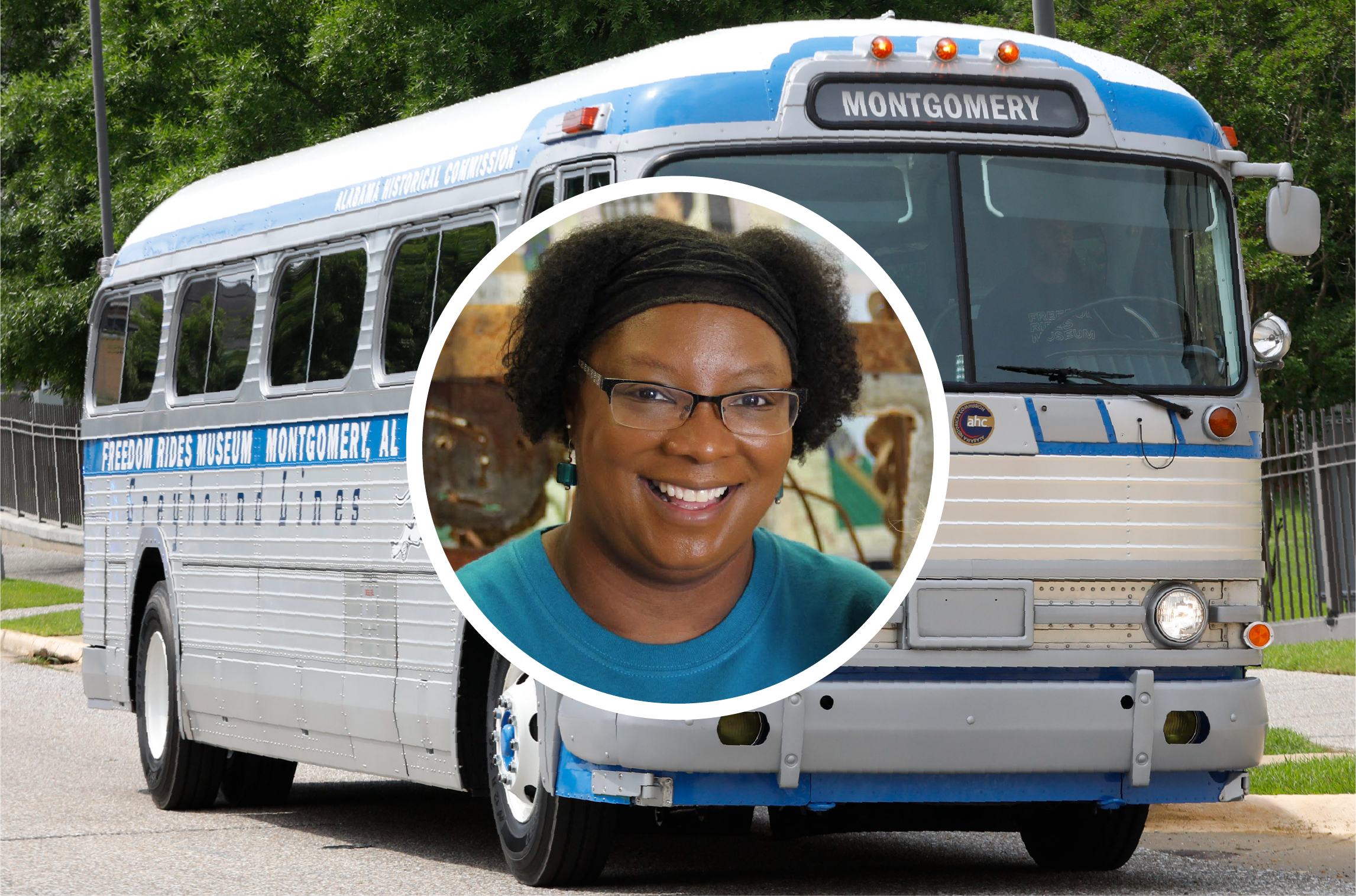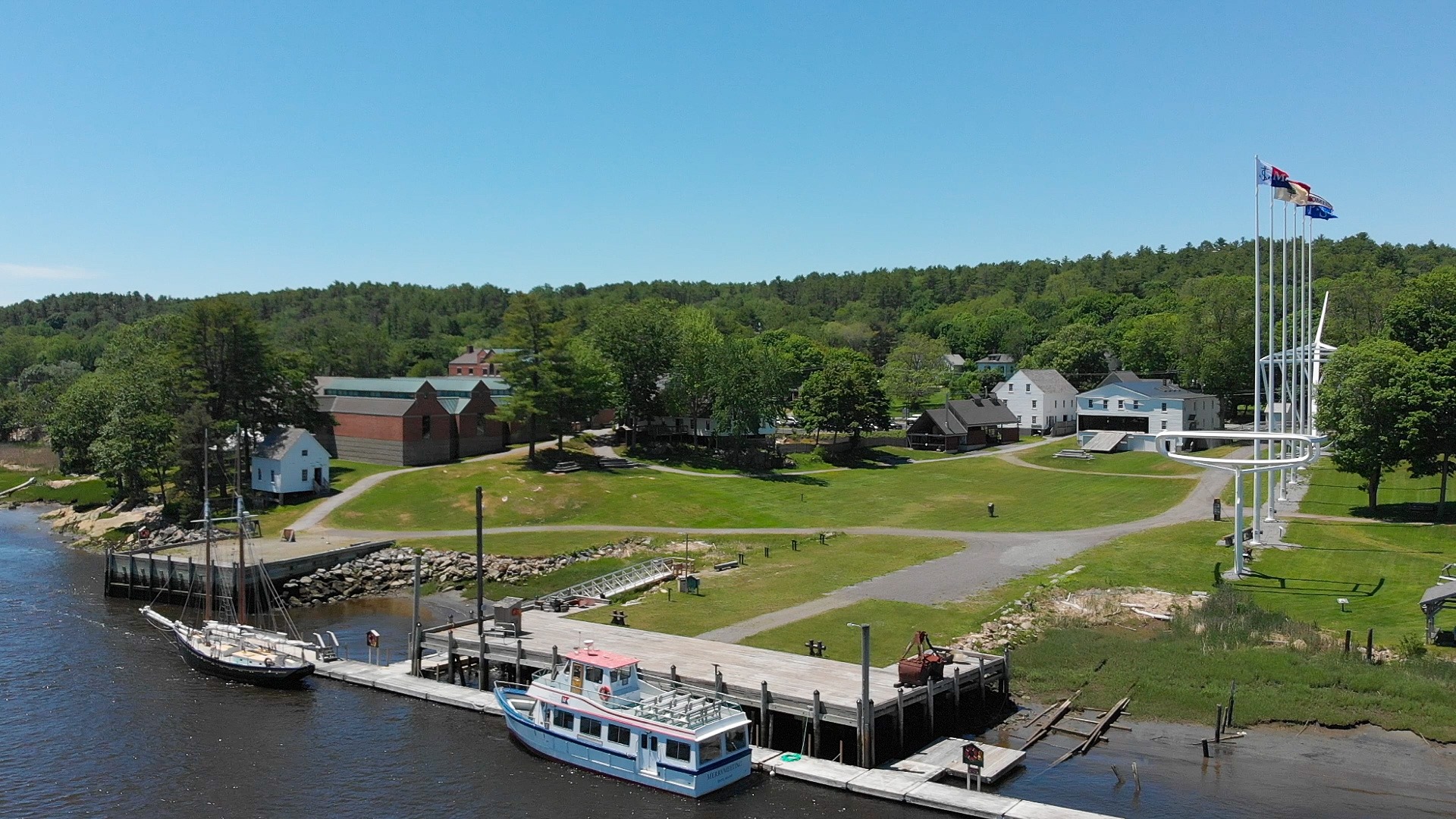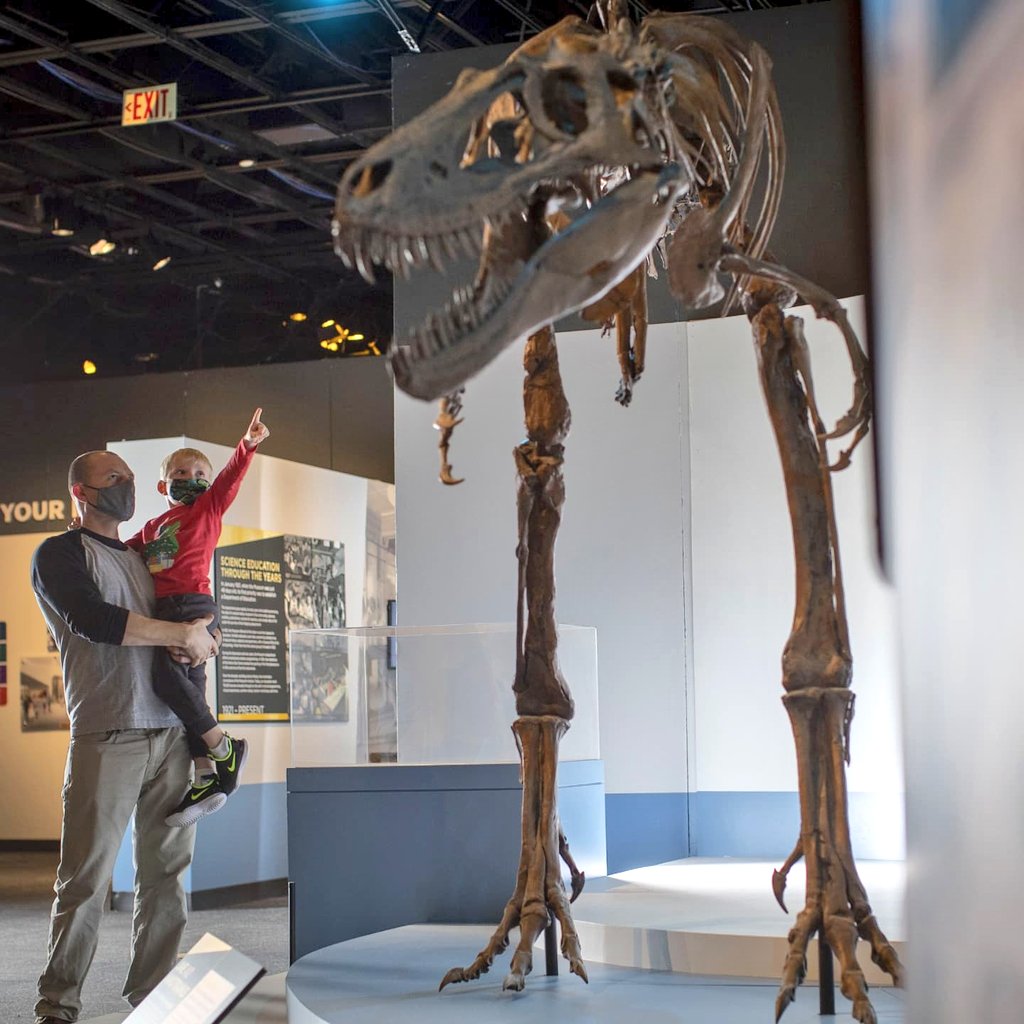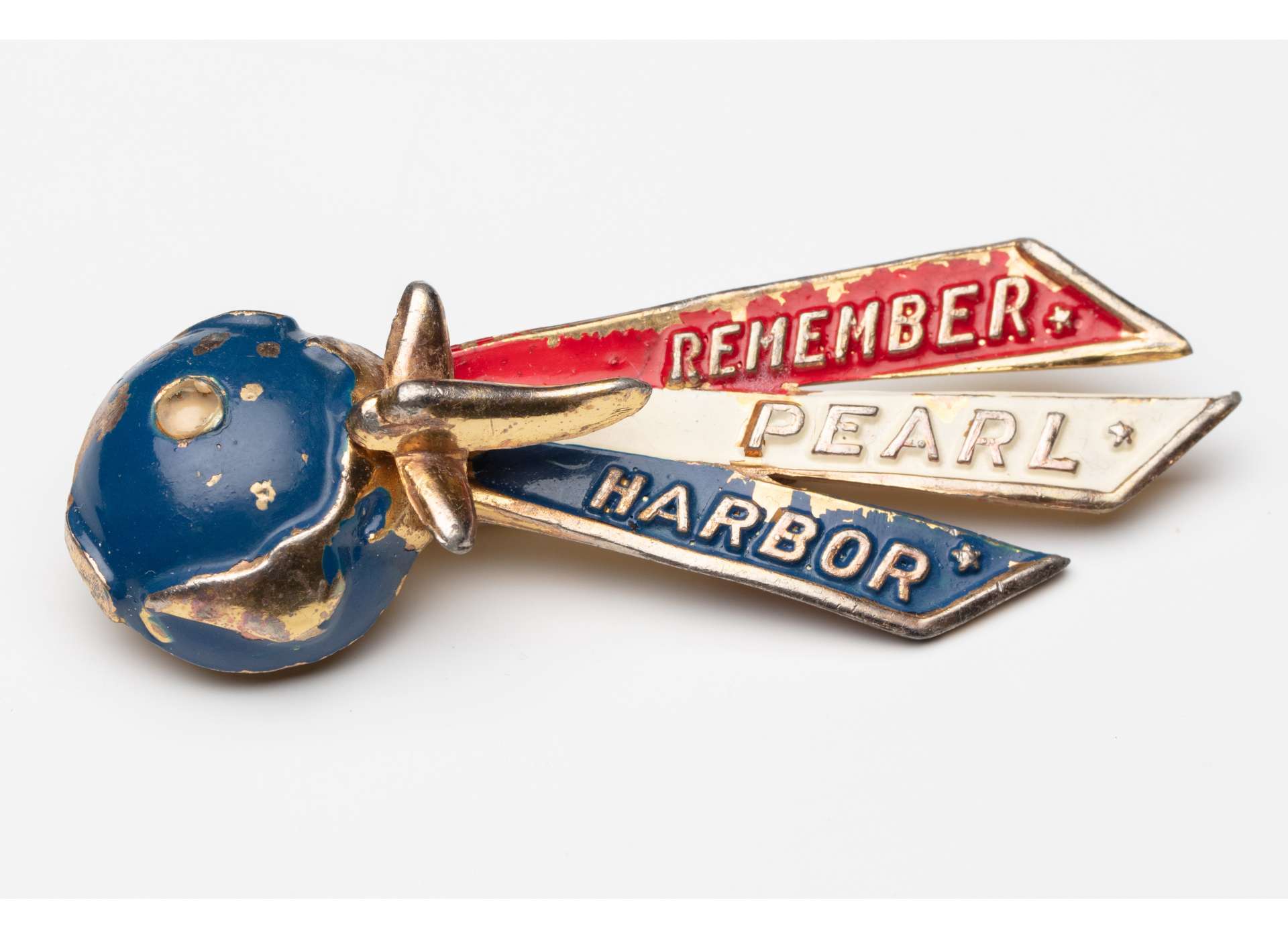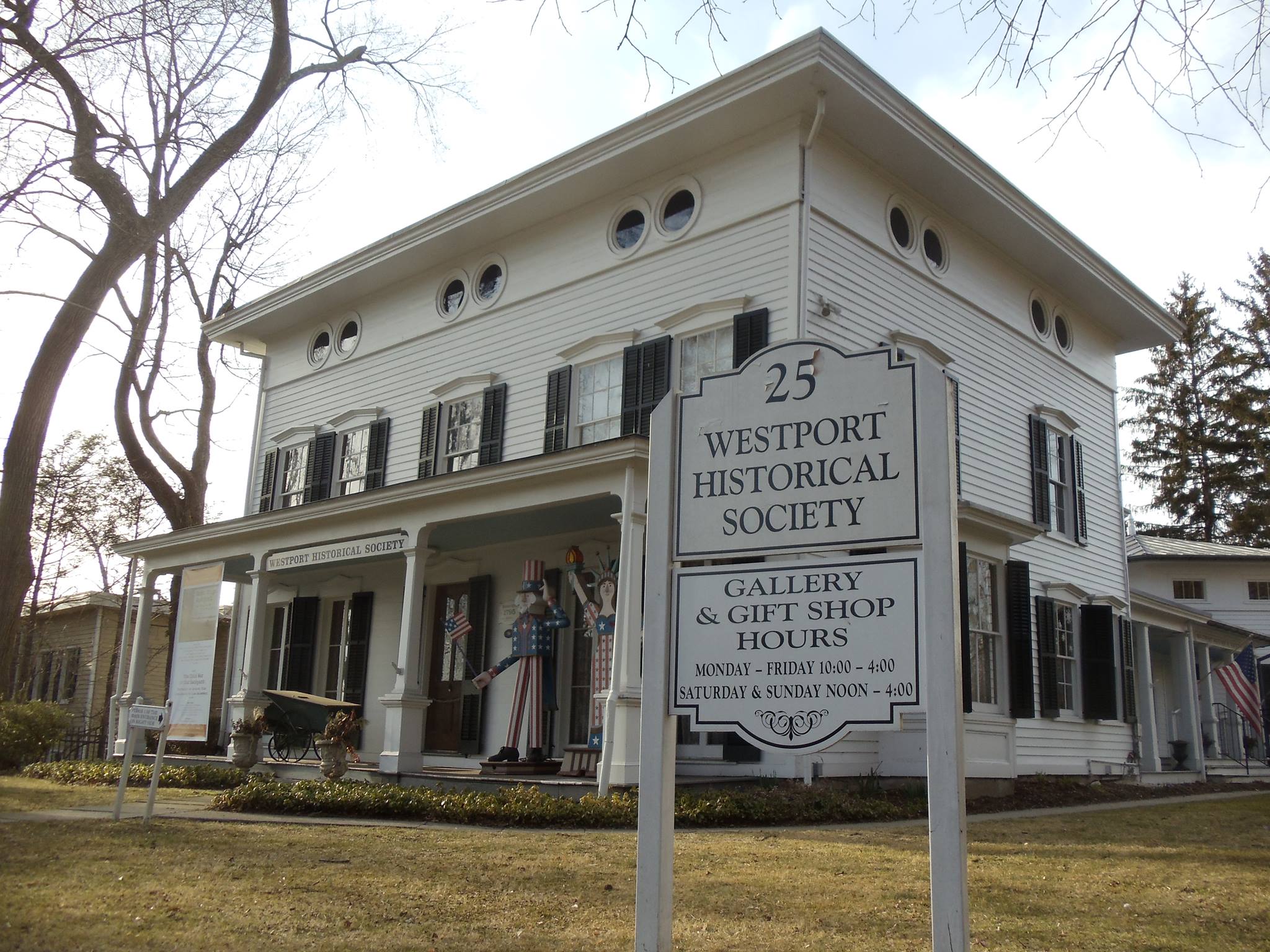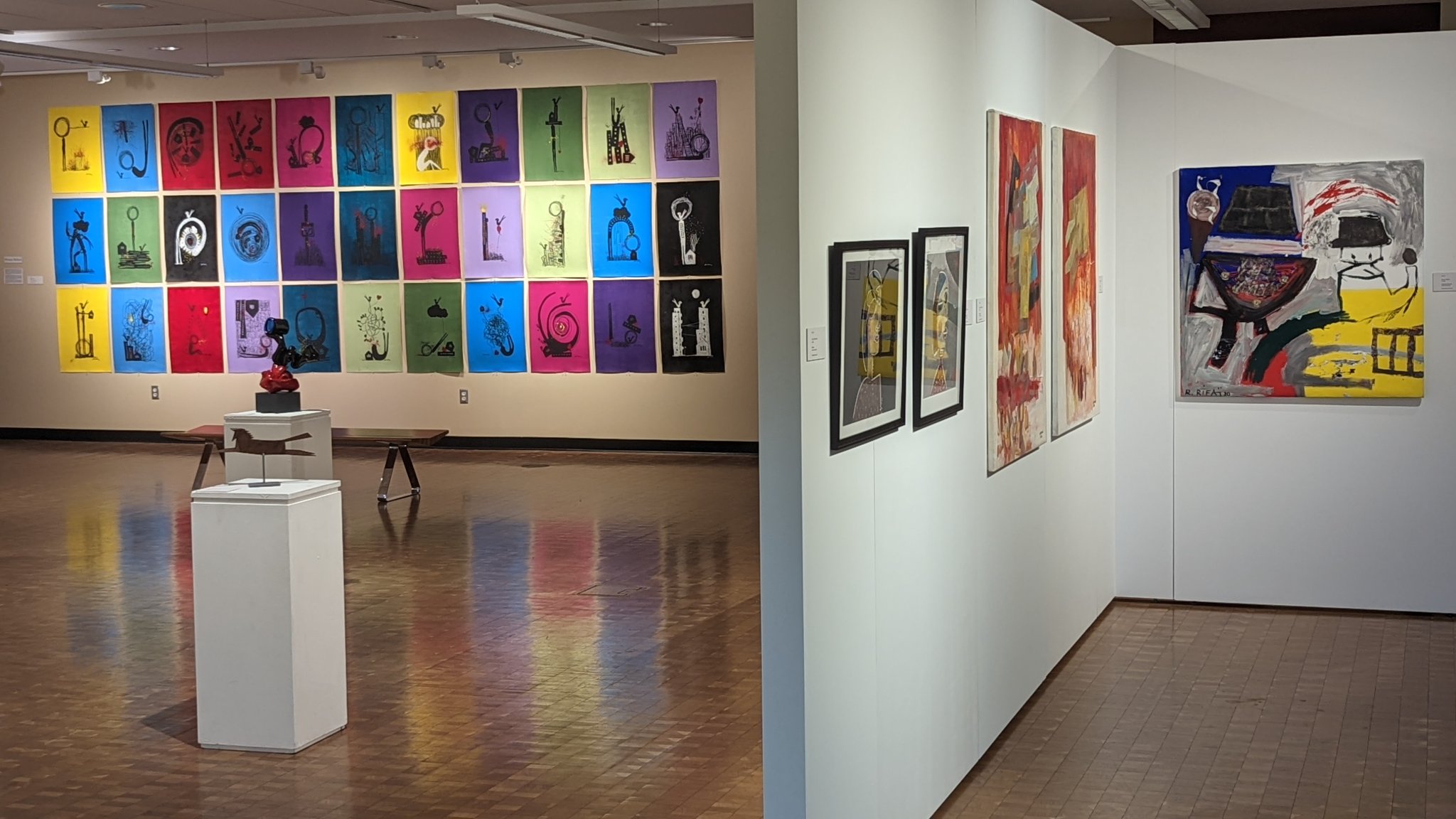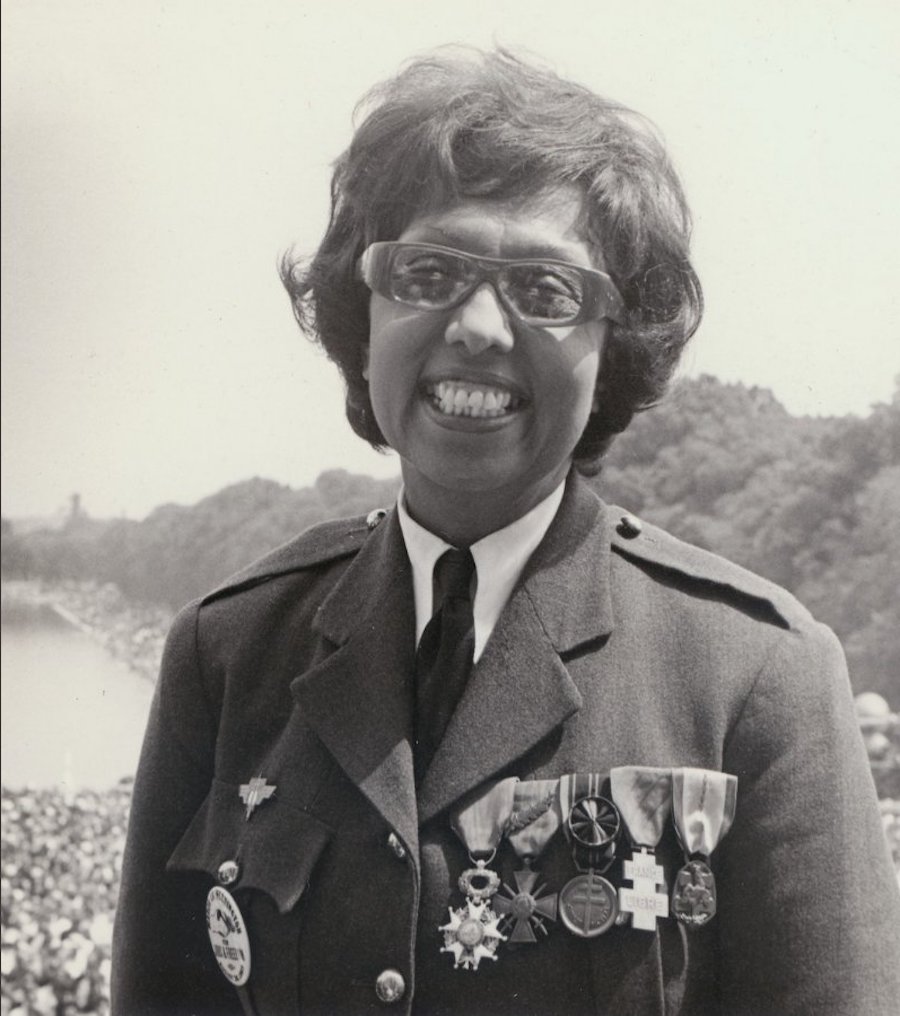Dorothy Walker, Freedom Rides Museum
Dorothy Walker serves as Site Director of the Freedom Rides Museum, an Alabama Historical Commission historic site at the former Greyhound Bus Station in Montgomery, Alabama. With a master’s degree in Historic Preservation, Dorothy has over 20 years of experience in cultural heritage advocacy, working tirelessly across planning initiatives and community outreach, and project research, budgeting, and management. She has been the dedicated Site Director for the Freedom Rides Museum since it opened its doors in 2011. The building was added to the National Register of Historic Places that same year.

What is the origin of the Freedom Rides Museum?
Greyhound operated a bus station at this location from 1951 until the early 1990s, when they decided to abandon the location and build a site outside of the downtown area. As the agency that assists in trying to preserve historic places related to Alabama’s history, the Historical Commission got involved with trying to preserve the bus station, which was the site of the attack on the Freedom Riders in 1961 here in Montgomery.
Ten years ago, the Historical Commission opened a museum within that facility. The goal was to tell the overarching story of the Freedom Rides from its inception and the context of segregated interstate travel, and hone in and emphasize the events that occurred in Montgomery. They changed the trajectory of the Freedom Rides movement and the Civil Rights movement in general because the Freedom Rides happened five months into President Kennedy’s administration, and it was the events that happened here, where the student Freedom Riders were attacked, that compelled the federal government to get more involved in the Civil Rights Movement.

How has your content and interpretation of the Freedom Rides evolved over the past decade?
We are an agency about place-based history, so we started out looking at it from a place-based perspective. What happened in this place? Why should this place be preserved? And why is it important? Then we grew the story out from there. You have these courageous individuals, more than 400 of them in total by the end of the five months between May and September of 1961. They risked their lives to challenge segregation that was occurring in interstate travel in violation of federal laws. Once we saved the place, we wanted to tell its story, but within the larger context of the overall Freedom Rides movement. I came to the Historical Commission in the late 1990s, and this was a project already underway.
At the time, we had many more people who had firsthand accounts that were being pulled together, both on a scholarly level and in the public history community. We were also reaching out to Freedom Riders, and there had been a big event for the 40th anniversary, so we had many people we could call.
Since we opened the museum in 2011, we have lost a lot of those firsthand accounts that we had access to 20 years or 25 years ago, so now we’re back to relying a lot on our scholarly interpretation. The story is constantly evolving, and stories that haven’t been written are being discovered because there were 436 Freedom Riders. To tell all their stories will take many lifetimes of many people.
We are grateful that there have been renewed efforts over the last decade to tell more of those individual Freedom Rider stories, but we’re missing a big chunk, and we acknowledge that in our museum. As long as we are telling the stories of the Freedom Riders—and we should be telling the story from that perspective—and we’re not telling the story of the opposition, we’re still telling an incomplete story. We don’t have firsthand accounts of the bus drivers or people who worked in the bus stations. We don’t have the perspective of the National Guardsmen who were here to protect these Freedom Riders or the local law enforcement. So we have many stories yet to come.

What is the museum’s relationship with the Freedom Riders who are still alive?
We know that quite a few Freedom Riders are still with us who are not necessarily connected to the museum because they don’t know we’re here. For the ones who are connected to us, we get a lot of support. They are very generous. Over the last decade, we’ve had at least a few dozen come through the museum, talking to groups, supporting the museum, and partnering with us on various things. We’ve been very, very fortunate over the last decade to have people not only who had given so much of their time when they were part of the movement, but then to continue to give up their time. We still have a roster of Freedom Riders that do virtual programming with the museum.
This event happened 60 years ago, right? So, if the youngest Freedom Riders were teenagers 60 years ago, then they are in their early 70s now, and that puts them in a high-risk category for the health issues we’ve been having over the last couple of years. But we found them much more willing and eager to engage on a virtual platform, so we were excited about that. They’ve become very adept at all the video types of technology.
When we had them here in person at the Freedom Rides Museum several years ago, they really soaked in the energy of the visitors whom they could touch and feel and hug and cry with. There still was energy when it went to virtual programming, but it was different. I do miss that part of it because when they were in the museum, they could sing and do all these things that visitors could join in with, and it was such a great experience to be a part of.
When we first started working with Freedom Riders over the last ten years, the trauma of the things that they went through, although it was always present in their stories, didn’t seem to rise to the surface as much as it has over the last couple of years. I always feel very conflicted when I have Freedom Riders because we’re asking them to tell this very traumatic story over and over again. I have been on Zoom with Freedom Riders, and in the midst of telling their stories to a group, tears will start going down their face. As they have progressed a bit in age, I realized that some of the trauma is affecting them in a different way than it did ten years ago.
We try to be very receptive to the changes in our Freedom Riders. As people who are interested in history, we want the full stories. We want to capture as much as we can, and we want to hear it firsthand. But we have to be aware as staff that there are times when parts of their stories are very heart-wrenching and traumatic and terrorizing for them. I hope that is something that visitors take away: understanding how much of a sacrifice it is for Freedom Riders to tell their story.

How do you see the museum and its preservation strategy evolving once we no longer have the Freedom Riders around to tell their own stories?
Over the years we’ve tried to capture as much as we could on video, and we hope to be able to provide those. We currently have a kiosk, but we switched over to the videos being on our YouTube channel so people could hear them even with all the health issues going on. Whenever we have a Freedom Rider in the museum who’s never been here before, we encourage them to sit and record. We are trying to do as much programming as we can with them so that we will have many of their stories when we no longer have them or they’re no longer able to tell their story.
But we’re also doing other things like collecting artifacts. We’re trying to build a whole experience around what it would have been like during the Freedom Rides to help visitors understand the significance of these events. One of the things we have in the museum is a replica of the vintage Coca-Cola crate that Congressman John Lewis was hit with at the bus station here in Montgomery in 1961. We talk about someone being hit in the head with a Coca-Cola crate, but when you actually see the crate holding Coca-Cola bottles, it’s a whole different perspective about how someone might have been injured. We also have bricks in the museum and are collecting baseball bats. We are trying to take elements of the story and let visitors see some of the artifacts that were used and imagine what it might have felt like to have a person hit you with a brick.
We realized that so much of our story at the museum is about the Greyhound Bus Station that we needed a bus. We are moving into an era where many kids are no longer riding buses to school or on field trips. Maybe there’s no bus system where they live, so they have never had a bus experience. We’re trying to describe a bus story to people who’ve never been on a bus. So, we restored a bus from the period. We’re hopeful that, between the artifacts and the bus, these elements will immerse people in this story in a very visible way that will help them reconnect more, even if they don’t get a chance to talk to the Freedom Riders themselves. We don’t want them to come to the museum and walk out feeling the same way they did when they walked in.

How else does your programming engage younger audiences?
One of the things we try to do is engage them to put it within their own context. Our engagement is so much richer then because they are thinking about the Freedom Rides within the context of their own histories and their own lives. When we have young people, particularly young people who are the same age as the Freedom Riders were in 1961, we always ask them, “Okay, you are now a Freedom Rider, and you have decided you will go on this journey. Raise your hand if you would tell your parents ahead of time that you’re going.” We put them on the spot because we want them to actively think about it.
We’re a small museum. You literally could get in and out in half an hour. But we see people come in and spend a couple of hours because they’re reading every single panel, and they’re asking their children every single question, and they’re asking them to recite things back to them. That’s encouraging because I think we’ll have a generation of students that will grow up having a better awareness and understanding of the individuality of these stories and the full arc of the narrative of Civil Rights. They will understand how they can make a difference and be agents of change because they will see these stories as real people.

What is your vision for the future of the Freedom Rides Museum?
I hope we’ll have a fleet of buses that we can dispatch all over the country. The Freedom Riders are getting more advanced in age, and they’re not going to be able to come to us, so the idea of the bus was also a way to bring the museum to them and bring the museum to people in other communities.
We have a very exciting exhibit plan for the museum that Ralph Appelbaum Associates developed for us. It maximizes the information available in our small space. It hits on some of the critical parts of the story that people don’t think about in terms of the Freedom Riders or even the Civil Rights movement in general, like the non-violence training that Freedom Riders went through. We want to be able to devote a section of the museum to that because we hope that people will be inspired to take up that legacy of responding to situations in their community by confronting an issue in a way that helps to bring about that change in a peaceful manner.
We want to expand on the stories. Reconciliation was a big part of what the Freedom Riders and people involved in the Civil Rights movement wanted to see happen in their lifetimes and beyond. I think reconciliation brings about healing, and peace, and understanding. I’d like to have those other stories: bus drivers and people who witnessed things. There are people who are more willing now than they were ten years ago to tell the authentic, hard stories of things that happened in our history. That’s really encouraging because I think we’ve got to tell the hard stories. It can’t all be that people prevailed over the obstacles. We’ve got to have stories about when they didn’t and what happened.




